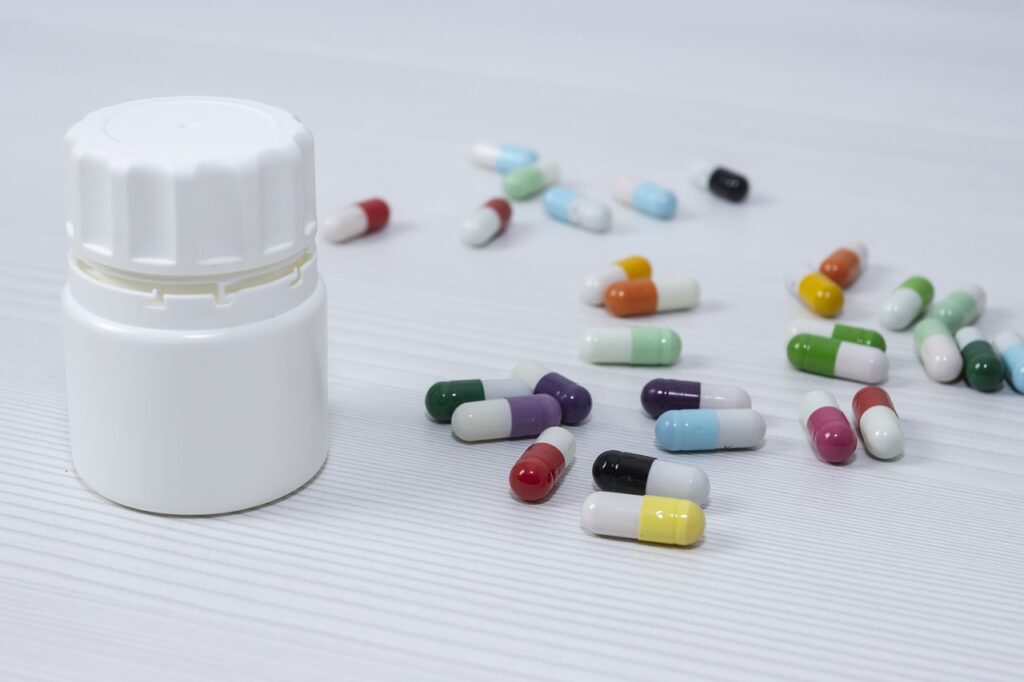As costs go up, people taking prescription drugs are often squeezed. When the Inflation Reduction Act was signed into law in August 2022 the law made improvements to Medicare by expanding benefits and lowering drug costs. Learn about the new changes announced this week!
For the first time, the law provides Medicare the ability to directly negotiate the prices of certain high-expenditure, single-source drugs without generic or biosimilar competition. The Centers for Medicare & Medicaid Services (CMS) selected ten drugs covered under Medicare Part D for the first cycle of negotiations for initial price applicability on January 1, 2026, and engaged in voluntary negotiations with the drug companies for the selected drugs.
The prices won’t take effect until 2026, but the measure is a landmark for Medicare. The federal government has never been able to directly haggle with drugmakers over the prices of their prescription drugs.
The doughnut hole is going away! IIn the donut hole, you pay up to 25% out of pocket for all covered medications. You leave the donut hole once you’ve spent $8,000 out of pocket for covered drugs in 2024. 2024 is the last year for the donut hole.
The information below is from the Medicare.Gov website and is in PDF form through this link.

Image by AVAKA photo from Pixabay
Lower Out of Pocket Drug Costs
- You might pay a lower coinsurance amount for certain drugs and biologicals covered by Part B, if their prices have increased higher than the rate of inflation. The specific drugs and potential savings change every quarter.
- If you have drug costs high enough to reach the catastrophic coverage phase in your Medicare drug coverage, you won’t have to pay a copayment or coinsurance, starting in 2024.
- Extra Help affording prescription drug coverage (the Part D Low-Income Subsidy (LIS) program) will expand to cover more drug costs for people with limited resources who earn less than 150% of the federal poverty level, starting in 2024. People who qualify for Extra Help generally will pay no more than $4.50 for each generic drug and $11.20 for each brand-name drug.
- Your yearly Part D out-of-pocket costs will be capped at $2,000, starting in 2025. You’ll also have the option to pay out-of-pocket costs in monthly amounts over the plan year, instead of when they happen.
- If the price of a drug covered by Part B (Medical Insurance) increased faster than the rate of inflation, you might pay less than 20% coinsurance for that drug. The specific drugs that are impacted and the potential savings may change every quarter. Get more information about Part B-covered drugs.
Lower Insulin Costs
Part D insulin costs: Your Medicare drug plan can’t charge you more than $35 for a one-month supply of each Part D-covered insulin, and you don’t have to pay a deductible. You’ll pay $35 (or less) for a one-month supply of each Part D-covered insulin product, even if you get Extra Help to lower your prescription drug costs.
If you get a 3-month supply of insulin, your costs can’t be more than $105 ($35 for each month’s supply).
Part B insulin costs: If you use an insulin pump that’s covered under Part B’s durable medical equipment benefit, or you get your covered insulin through a Medicare Advantage Plan, your cost for a month’s supply of Part B-covered insulin can’t be more than $35. The Part B deductible won’t apply.
If you have Part B and Medicare Supplement Insurance (Medigap) that pays your Part B coinsurance, your plan should cover the $35 (or less) cost for insulin. If you get a 3-month supply of insulin, you’ll generally pay no more than $105, because your costs can’t be more than $35 for each month’s supply of each covered insulin.
Get more information about this new insulin benefit. Learn more about insulin costs.
Specific Drug Negotiation
For the first time, Medicare will be able to negotiate directly with manufacturers for the price of certain high-spending brand-name Medicare Part B and Part D drugs that don’t have competition.
- The first 10 drugs selected for negotiation are:
- Eliquis
- Jardiance
- Xarelto
- Januvia
- Farxiga
- Entresto
- Enbrel
- Imbruvica
- Stelara
- Fiasp; Fiasp FlexTouch; Fiasp PenFill; NovoLog; NovoLog FlexPen; NovoLog PenFill
- Negotiated prices for these first 10 drugs will be effective in 2026.
- In the future, Medicare will select and negotiate costs for:
- 15 Part D drugs in 2025 (effective in 2027).
- 15 Part B and Part D drugs in 2026 (effective in 2028).
- 20 Part B and Part D drugs in 2027 (effective in 2029).
- 20 Part B and Part D drugs in 2028 and every year after.
Here are the negotiated prices for the ten drugs listed, based on a 30-day supply:
- Eliquis, a blood thinner from Bristol Myers Squibb and Pfizer: $231 negotiated price, down from $521 list price.
- Xarelto, a blood thinner from Johnson & Johnson: $197 negotiated price, down from $517 list price.
- Januvia, a diabetes drug from Merck: $113 negotiated price, down from $527 list price.
- Jardiance, a diabetes drug from Boehringer Ingelheim and Eli Lilly: $197 negotiated price, down from $573 list price.
- Enbrel, a rheumatoid arthritis drug from Amgen: $2,355 negotiated price, down from $7,106 list price.
- Imbruvica, a drug for blood cancers from AbbVie and Johnson & Johnson: $9,319 negotiated price, down from $14,934 list price.
- Farxiga, a drug for diabetes, heart failure and chronic kidney disease from AstraZeneca: $178 negotiated price, down from $556 list price.
- Entresto, a heart failure drug from Novartis: $295 negotiated price, down from $628 list price.
- Stelara, a drug for psoriasis and Crohn’s disease from J&J: $4,695 negotiated price, down from $13,836 list price.
- Fiasp and NovoLog, diabetes drugs from Novo Nordisk: $119 negotiated price, down from $495 list price.

Image by inspireus from Pixabay
Keeping Track
Medical, dental, and prescription costs can add up. Keep track of what you spend!
Double-check everything with the explanation of benefits (EOB’s) you receive from Medicare, and any private and/or supplemental insurance plans you have to make sure everything adds up. This can be helpful come tax time.
How you keep track of this and everything is a personal choice. Choose what you’re comfortable with and what you’ll do! Always remember that it’s a good idea to share what you do and how you do it with your designated “helpers”, just in case.
If you’re interested in pre-planning, knowing what to do at a loss, and/or learning about the ongoing follow-up, check out my book The Living Planner (What to Prepare Now While You Are Living). Here is a direct link to my shopping cart. Check it out HERE. For those who prefer to access information via an online portal, I’ve created a step-by-step 12-Module DIY method: Check it out HERE.
Reach out via Email or Message me if you have any questions. For additional information about my work check out @ The Living Planner or @ The Living Planner.
Sharing this quote today “Wisdom is knowing what to do next. Skill is knowing how to do it. Virtue is doing it.” – Thomas Jefferson
To wisdom, skill, and virtue – have a good week 🌞Lynn
#Can’tPredictCanPrepare #PlanfortheUnplanned

